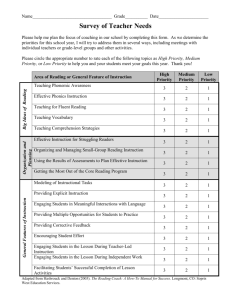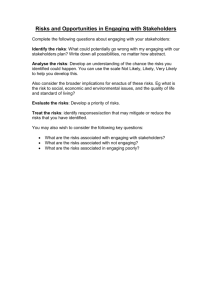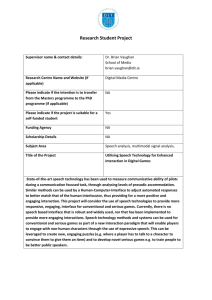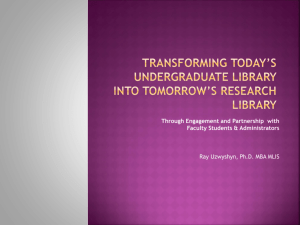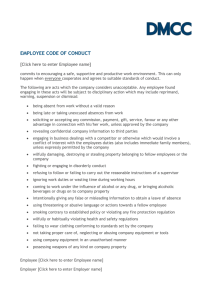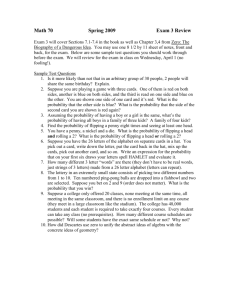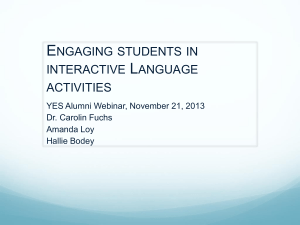teaching
advertisement
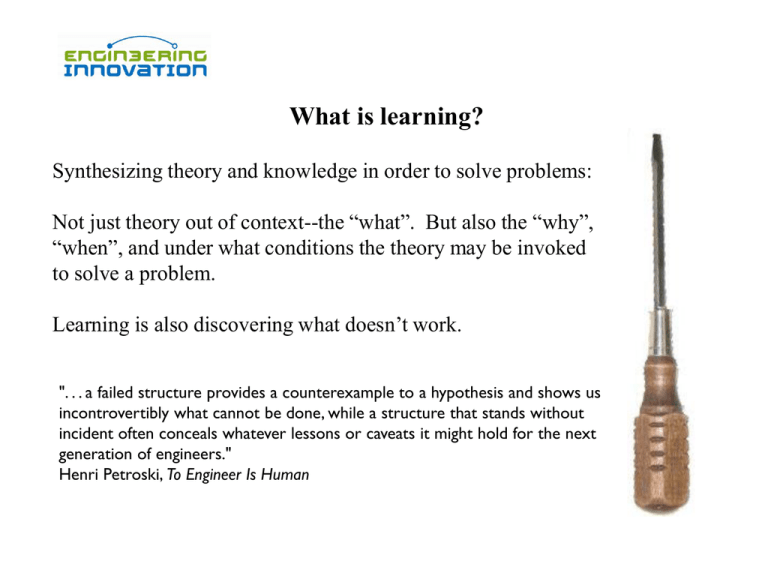
What is learning? Synthesizing theory and knowledge in order to solve problems: Not just theory out of context--the “what”. But also the “why”, “when”, and under what conditions the theory may be invoked to solve a problem. Learning is also discovering what doesn’t work. ". . . a failed structure provides a counterexample to a hypothesis and shows us incontrovertibly what cannot be done, while a structure that stands without incident often conceals whatever lessons or caveats it might hold for the next generation of engineers." Henri Petroski, To Engineer Is Human Best educational technique: Apprenticeships Graduate-student training Medical residency programs Plumber’s apprenticeships Music lessons Learn by doing! Personally, I'm always ready to learn, although I don't always like being taught. Winston Churchill Best educational strategies in a classroom 1) Provide context--give reason to understand a theory or calculation 2) Give problems “out of the chapter” 3) Give assignments that involve efficiency, cost, functionality, accuracy The trouble with learning is that it is about stuff you don’t know. Dennis the Menace Best educational strategies in a classroom (cont.) 4) Back-of-the-envelope problems: “Fermi questions” 5) Assignments without single, deducible, correct answers 6) Taking data and deducing the underlying physical principles 7) Hands on--laboratories, virtual laboratories, projects Engaging the students • Do’s – Introduce each topic or subtopic by posing a problem • • • • • Suppose we need to devise a robot that moves toward light. . . Suppose we want to separate fat from gravy for a Thanksgiving dinner. . . Suppose we want to bid on a tree as material for a toothpick factory. . . Suppose we need a bridge to support the weight of a car. . . Suppose we would like to deduce the period of a pendulum. . . – Continually ask “why” • • • • Why do we want to do this? Why do we care? Why digital instead of analog? Why binary instead of decimal? Engaging the students • Do’s (cont.) – Ask the complementary question “Why not?” • • • • Why not use Elmer’s glue (or a glue gun) on spaghetti bridges? Why not measure the weight of a single penny on a postal scale? Why not use titanium to build bridges? Why not Engaging the students • Do’s (cont.) – Ask “what?” • What tools/principles can we use on this problem? – finding forces in members attached to a pin joint on a stationary structure – separating alcohol from water – improving the accuracy of a measurement • What are the conditions under which XXXX will/will not work? – Can we have a stone lintel that spans 20 feet? – When will a model yield characteristics of its full-scale counterpart? – What does it mean if the mass entering a control volume does not equal the mass leaving a control volume? Engaging the students • Do’s (cont.) – Give examples and counter examples – Give reasons for each step in solving a problem (the solution is less important than the strategy for approaching it) – Pose sub-problems, i.e., “what if?” – Relate to other fields • mass conservation vs. Kirchoff’s laws • heat flow vs. electron flow vs. particle diffusion (gradient transport) Education is what is left after you've forgotten everything you've learned. Albert Einstein Engaging the students • Don’ts – – – – Don’t present theories/calculations without context Don’t use ambiguous or loosely defined terms Don’t “plug and chug” problems (maybe it’s OK occasionally) Don’t present topics without placing them within a “bigger picture” What I hear, I forget. What I see, I remember. What I do, I understand. Confucius, 451 BC What is Engineering? The course. From a fundamentals point of view: 1) Dimensions and their role 2) vs. 3.1416 and dx vs. x 3) “Stuff” is conserved 4) Zero as a condition, e.g., forces 0 5) NAND gates rule the digital world What is Engineering? The course. From a substantive point of view: 1) 2) 3) 4) 5) 6) 7) Strength/behavior of materials Statics/structures Uncertainty, statistics, measurement Robotics Digital logic/circuitry Separation processes Diffusion, heat transfer The uncreative mind can spot wrong answers, but it takes a very creative mind to spot wrong questions. Anthony Jay What is Engineering? The course. From a “process” point of view, i.e., what an engineer does 1) Communication a) proposal presentation b) development of assembly/construction plans c) reporting and interpreting of laboratory results d) research synthesis (written) 2) Project management a) time/team management b) design c) construction d) testing What is Engineering? The course. “process” (cont.) 3) Experimentation a) measurement b) application of principles c) application of data 4) Tools a) approximation b) statistics c) computer software i) simulation ii) spreadsheet/presentation iii) graphics/drawing What is Engineering? The project. 1) Properties of materials 2) Materials laboratory 3) Theory of structures F x 0, F y 0, F z 0, 0 4) Design a bridge to specification 5) Build it 6) Test it
